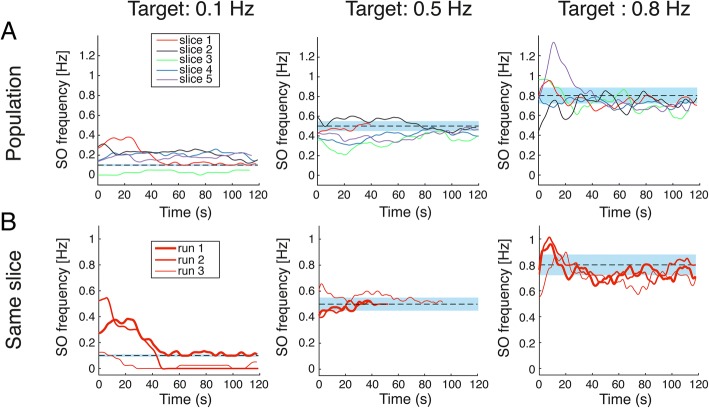Fig. 6.
System flexibility and stability. a Behavior of SO frequency for all the slices (n = 5, color-coded). At t = 0, the closed-loop fine-tuning phase starts. In some cases (particularly at target 0.1 Hz), the frequency did not reach the target in the maximum time imposed by our protocol (120 s). The slope of the patterns, particularly for target 0.5 Hz and 0.8 Hz, suggests that the frequency would have reached the target over time. The same cannot be said for what concerns the 0.1 Hz, where many times the reached frequency was strongly decreased to a value between 0 and 0.2 Hz. b Data acquired from repetitions of one slice (slice 1) during a single uninterrupted series of 3 closed-loop protocols complete runs. Differences between the repetitions of the same target-reaching phase exist: the closed loop compensates for such unpredictable variations. Shadow bars represent the tolerance range, set at 10% of the target frequency (0.01 Hz, 0.05 Hz and 0.08 Hz respectively)

